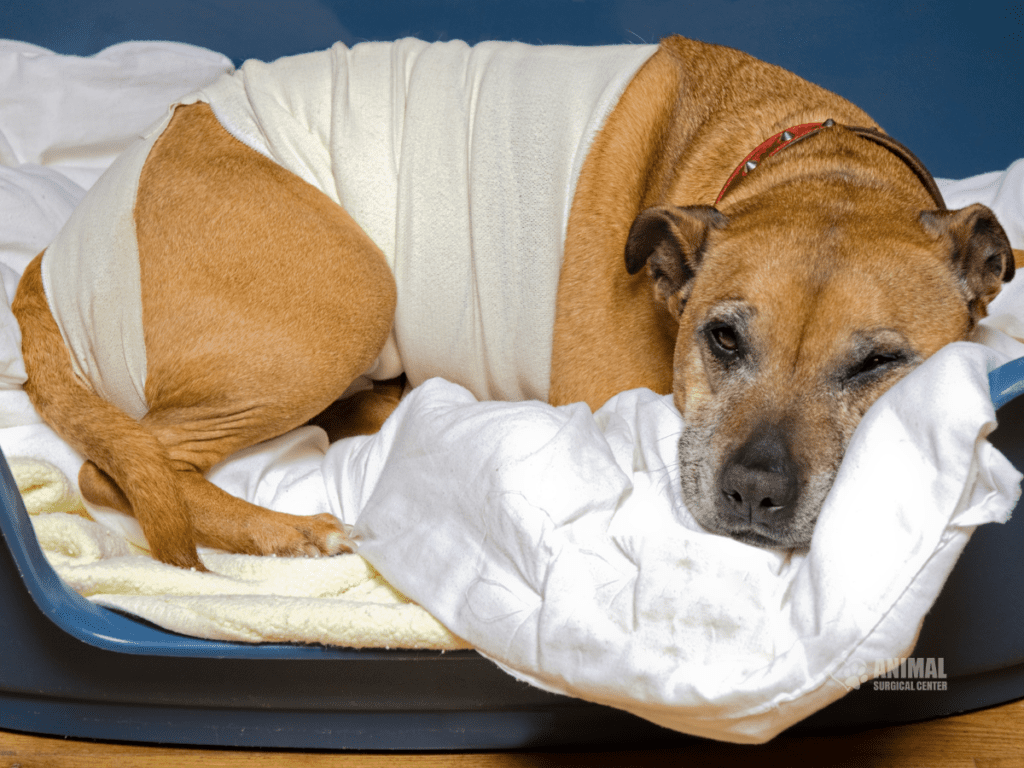Article Release: Issue 14
Release Date: November 13, 2024
Written By: Dr. Tomas Infernuso DVM, DACVS

At the Animal Surgical Center, we understand the stress and worry that come with a serious health issue in your pet, especially when it involves their spine. Spinal problems can drastically affect your pet’s mobility and quality of life. For this reason, timely and precise diagnosis, effective treatment, and comprehensive rehabilitation are all essential for your pet’s recovery. In this article, we’ll walk you through our process for spinal surgery, covering diagnostic methods, treatment options like laminectomy, and the rehabilitation services we provide.

Diagnosing Spinal Issues with CT Scans
Accurate diagnosis is the first critical step in treating spinal issues. At the Animal Surgical Center, we rely on advanced imaging technologies, such as Computed Tomography (CT) scans and myelograms, to gain a detailed view of your pet’s spine. Unlike standard X-rays, CT scans provide cross-sectional images that allow us to detect conditions like herniated discs, spinal tumors, fractures, and other abnormalities with exceptional clarity.
Performed under light anesthesia, CT scans are non-invasive, keeping your pet comfortable and still throughout the process. These detailed images play a key role in planning the most effective surgical approach, ensuring the best possible outcomes for each patient.
Laminectomy: A Common Spinal Surgery
Laminectomy is one of the most common surgeries we perform for spinal issues. This procedure involves removing a section of the vertebral bone (known as the lamina) to relieve pressure on the spinal cord or nerves. Conditions like herniated discs, spinal tumors, or spinal cord compression frequently require a laminectomy.
During surgery, our skilled team carefully removes the targeted bone section, which alleviates pressure and provides relief from pain and neurological symptoms. The ultimate goal is to restore your pet’s mobility and improve their quality of life.
Recovery and Rehabilitation: Laser Therapy and Massage
Post-surgery recovery is a vital part of the healing journey. At the Animal Surgical Center, we emphasize thorough and supportive rehabilitation to aid in a smooth recovery for your pet.
Our rehabilitation program incorporates two essential therapies:
- Laser Therapy: This non-invasive treatment uses low-level lasers to stimulate cellular activity, reduce inflammation, and promote healing. Laser therapy effectively reduces post-surgical pain and accelerates the recovery process.
- Massage Therapy: Gentle massage aids circulation, reduces muscle tension, and alleviates discomfort. It also promotes relaxation, helping your pet feel more at ease during recovery.
Our team works closely with pet owners to create a customized recovery plan tailored to each pet’s unique needs. We also provide home care guidance to ensure your pet continues to improve once they return home.
Conclusion
Spinal surgery is a major decision, but with proper diagnosis, treatment, and rehabilitation, your pet has an excellent chance of regaining mobility and enjoying a healthier, happier life. Our team at the Animal Surgical Center is dedicated to delivering the highest standard of care at every stage of your pet’s journey. If you have any questions or concerns about your pet’s spine or if they have been diagnosed with a spinal condition, please reach out to us. We are here to guide you through this process and support your pet’s recovery every step of the way.
With Compassion and Care,
The ASC Team
About Us
At Animal Surgical Center, our dedicated team is driven by a profound passion - to save as many animals as possible by providing excellent care and service at a fair price.
